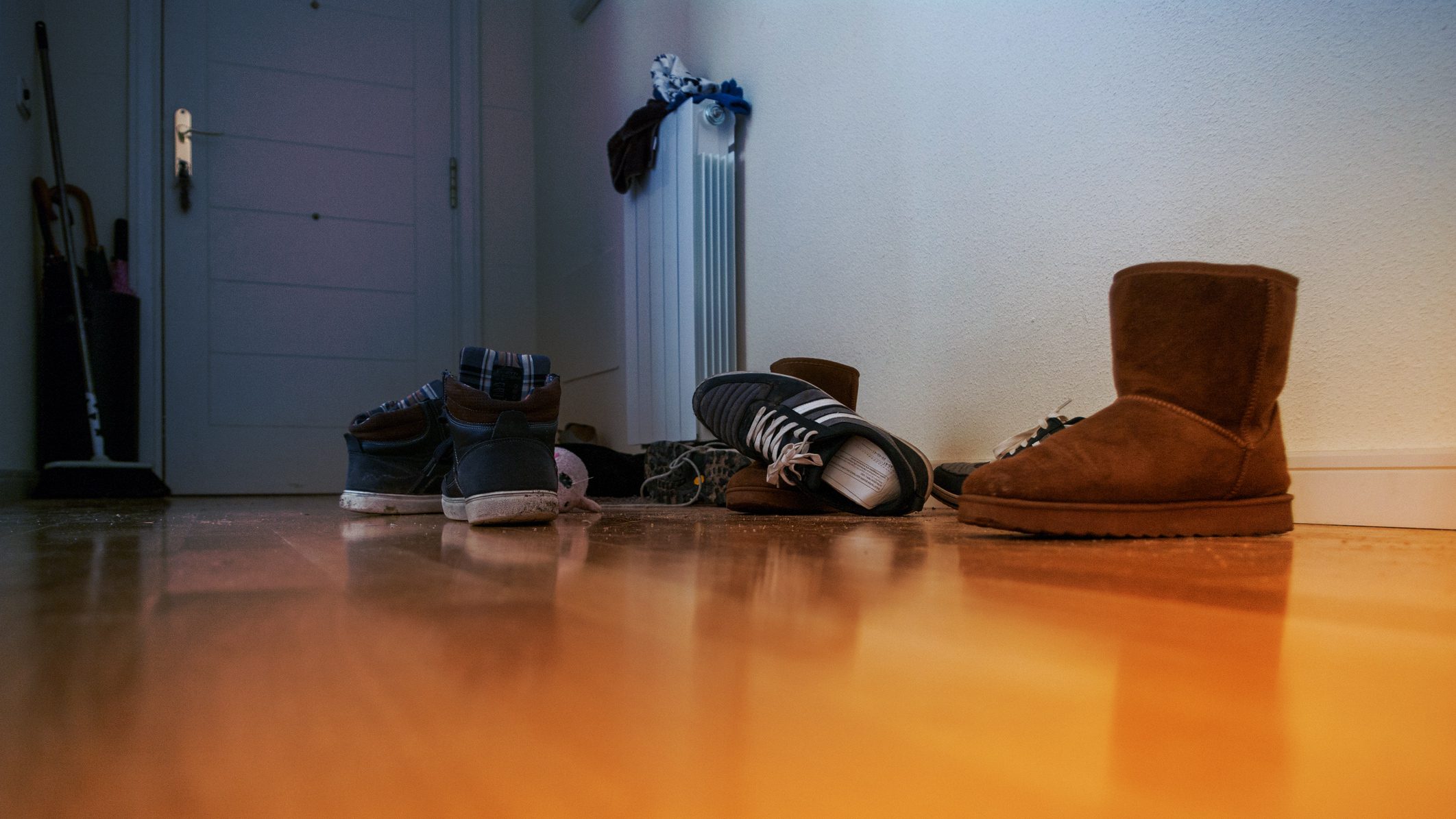
Inspired by Travel/Getty Images
A well-designed entryway is an important tool for homeowners who want their property to make a good impression. After all, it’s the first space that guests really see. A cramped or dark foyer might leave them expecting a creepy living room worthy of the Addams family, or even turn off prospective buyers before they set foot beyond the hallway.
If you suspect your entryway style might be falling short of the mark, why not find out for sure? Rather than drawing up a list of everything that makes a good foyer, we decided to give you all the details on what makes a bad one. So check it over to make sure you aren’t making any of these classic mistakes.
1. Too-large furniture
So you need some furniture pieces in your foyer, and you have an extra side table in the living room. That should work, right?
Not necessarily so, says Laurie Wiluan, founder and CEO of Personal Space MB, who says putting too-large furniture in the entryway is a classic mistake.
“Often, people feel scared to place furniture in the entryway at all,” Wiluan says. “If a brave soul does place a piece of furniture, they often grab it from the living room, but these pieces rarely have the scale needed for entryway proportions. The entryway has a function, and it’s best to keep this in mind when choosing furniture.”
Try shopping for slender items that are actually meant for this smaller space, that will augment it without blocking everyone’s path into the house.
2. Not enough light
Having a too-dark entryway is another classic mistake found in many houses. Whether the problem is with inadequate lighting or darkly painted walls, the result is the same—and not a good one.
“We want our entryways to make a person walking in feel happy and at peace,” says designer Kayla Goldstein of Kayla LLC. “A dark entryway will make them want to leave, even subconsciously.”
Make sure you have a large source of light on the ceiling and bright walls and decor, she says.
“If you have natural light—use it. It’s amazing,” Goldstein adds.
3. No place to sit
What’s the first thing most of us do when arriving home? Kick off our dirty shoes. And yet so many foyers still seem to lack the one basic thing that helps you do that without losing your balance: a place to sit down.
“Not all of us have the core strength of a yoga instructor, so a place to sit down and put shoes on is critical,” says Wiluan. “If there’s not enough room for two chairs or a bench, a stool can work, and it doesn’t have to look utilitarian. There are beautifully painted ceramic stools that can brighten a foyer and function as seating when needed.”
4. Nothing to organize clutter
Right after taking off shoes, the second thing many of us will do is to drop a pile of stuff somewhere in the entryway. And while groceries and other purchases generally make their way further in the house, a few things tend to remain, and then pile up—like your keys and the mail.
“No matter how small or big your entryway, you need a place to dump your keys, organize clutter, etc.,” says Goldstein. “This can be a little shelf, a table with a tray, or hooks that have some kind of hanging organizer. The only thing I would be careful of is to make sure you don’t leave too much space for clutter, because then it will become over-cluttered— not something we want to walk into every day.”
5. Theme in excess
We all like to have a themed room here and there, but one place you really don’t want to go overboard with any sort of theme is in the entryway.
“I love themes,” says home designer Theresa Clement of MyFixitUpLife. “They’re great in a child’s bedroom or playroom, and fun in a man cave or other recreational area. But an entryway is a transitional area, which usually calls for a more neutral feel. It’s the place where we move from public to private—so it’s a bit much to throw an intense theme at a guest right at the front door.”
6. Too much (or not enough) color
While you don’t want to go overboard on the themes, that doesn’t mean your entryway shouldn’t have some interesting color and decor. The best way to avoid having a foyer that’s too neutral or too hyped up? Follow the 60/30/10 rule.
“Always make sure you’re using a color palette,” says Goldstein. “This way you don’t use too little or too much color. A good rule of thumb is 60/30/10— 60% is your main color, 30% is the complementary color, and 10% is a pop of color.”
The post 6 Classic Foyer Decor Mistakes That Make Designers Cringe appeared first on Real Estate News & Insights | realtor.com®.
No comments:
Post a Comment